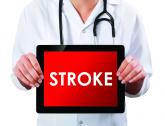SAN DIEGO – A new analysis shows that Mexican Americans (MAs) have worse cognitive outcomes a year after having a stroke than do non-Hispanic whites (NHWs).
The findings, which show that MAs had a mean score of 86 on the Modified Mini-Mental State Examination (3MSE; range: 0-100), compared with 92 for NHWs, come from a prospective study of MAs and NHWs in Corpus Christi, Texas, where both populations have long-established residencies.
The conclusions held up even after the researchers controlled for insurance status and a range of other factors, including comorbidities, age, stroke severity, and prestroke cognition. “None of those influenced the relationship,” said Lewis Morgenstern, MD, who presented the research during a poster session at the annual meeting of the American Neurological Association.After controlling for all factors, the researchers found a difference of –6.73 (95% confidence interval, –3.88 to –9.57; P less than .001).
“The Mexican-American population is growing quickly and aging. The cost of stroke-related cognitive impairment is high for patient, family, and society. Efforts to combat stroke-related cognitive decline are critical,” said Dr. Morgenstern, professor of neurology and epidemiology at the University of Michigan, Ann Arbor.
The study grew out of the Brain Attack Surveillance in Corpus Christi (BASIC) Project, which began in 1999 and is funded until 2019. It is the only ongoing stroke surveillance program that focuses on Mexican Americans, who comprise the largest segment of Hispanic Americans.
The researchers analyzed data encompassing all stroke patients in the BASIC Project from October 2014 through January 2016 (n = 227). They analyzed cognitive outcome data from 3 months, 6 months, and 12 months. MAs were younger on average than NHWs (median age 66 vs. 70; P = .018), and were more likely to have diabetes (54% vs. 36%; P less than .001). They were less likely to have atrial fibrillation (13% vs. 20%; P = .025).
At 12 months, MAs had a lower median 3MSE score of 86 (interquartile range, 73-93, compared with 92 in NHWs (IQR, 83-96; P less than .001). As the researchers adjusted for additional factors, the discrepancy became larger. Adjustment for age and sex revealed a difference of 6.88 (95% confidence interval, 4.15-9.60). Additional adjustment for prestroke condition showed a difference of 7.04. Additional adjustment for insurance led to the same differential of 7.04. Adjustment for diabetes and comorbidities pushed the difference to 7.11. Adjustment for stroke severity (National Institutes of Health Stroke Scale) revealed a difference of 6.73 (P less than .001).
Asked if the results were surprising, Dr. Morgenstern replied: “I think it’s always surprising to see one population of U.S. citizens who have more disease or a worse outcome than another when it’s not explained by the many possible factors we considered.” He also called for additional studies of cognitive dysfunction in Hispanic communities in other forms of dementia, such as Alzheimer’s disease and vascular dementia. “There’s very little of that,” he said.
The National Institutes of Health funded the study. Dr. Morgenstern reported having no financial disclosures.
